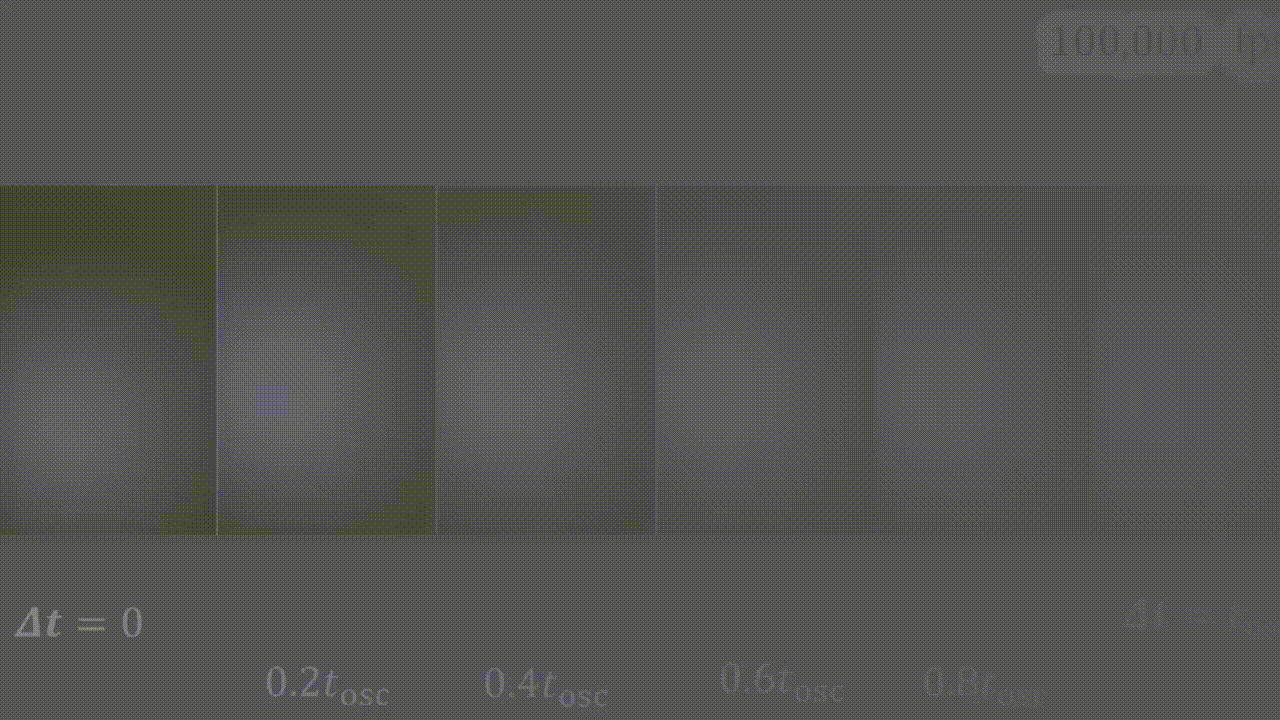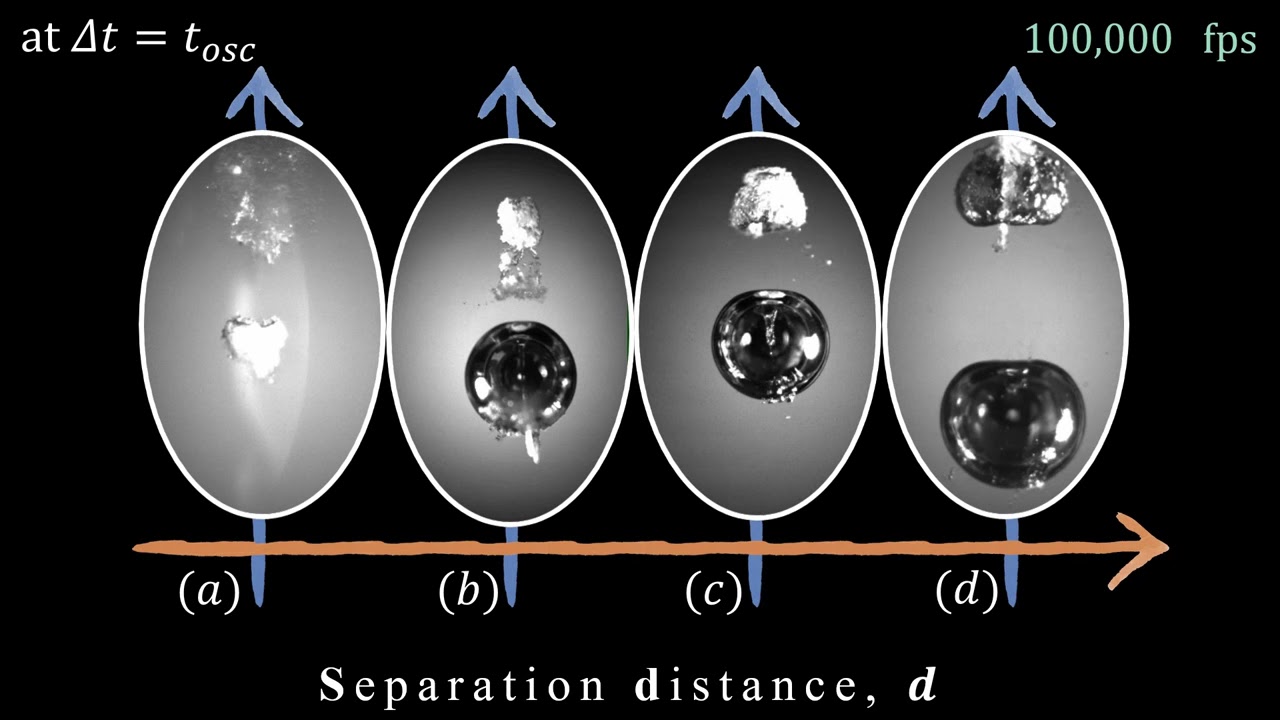Award-Winning Visualisation of Interacting Cavitation Bubbles
Through high-speed visualisation and 3d DNS, we unravel the mechanism of high-speed micro-jets in the complicated dynamics of interacting cavitation bubbles. Further, we classify bubble pair interaction via their respective phase and distance.
In most practical applications, bubbles appear as clusters, filaments, and clouds rather than isolated bubbles. Cavitating flows and ultrasonic cleaning processes also produce numerous tiny vapour bubbles. The dynamic behaviour of these bubbles within a cavitation cloud with mutual interactions is more complex than that of a single bubble. This work attempts to understand the complicated dynamics of an interacting cavitation bubble pair and the resulting liquid micro-jets.

Our results suggest that the rebounding top bubble after its collapse imparts momentum by transmitting the pressure energy to the confined liquid (primary motion) that leads to the onset of the jet motion in the bottom bubble. The inertial focusing of flow (secondary motion) on the bottom bubble accelerates the micro-jet even further, culminating in an extraordinarily fast needle-like jet. As observed in this work, the directional liquid jets can generate strong mechanical shearing suitable for cell sonoporation, targeted drug delivery and able to erode certain plastics, polymers, and metals.
We received the external pageMilton Van Dyke Video Awardcall_made for the video titled "Flow-focusing from interacting cavitation bubbles" submitted to the Gallery of Fluid Motion at the 74th annual meeting of the American Physical Society (APS) Division of Fluid Dynamics on 22 November 2021. The external pageGallery of Fluid Motioncall_made was introduced in 1987 and features striking visualizations of experiments and simulations that illustrate the science of fluid motion. The video is a collaboration with researchers from the Indian Institute of Technology Kharagpur (external pageIIT Kharagpurcall_made), combining high-speed imaging of laser-induced cavitation bubbles performed in our lab with 3d direct numerical simulations (DNS) performed by our collaborators at IIT Kharagpur. Arpit Mishra, a doctoral student from IIT Kharagpur, conducted the experiments while staying in Zurich on an ETH for Development (ETH4D) Visiting Research Grant.

Find out more about our contribution from the corresponding APS Physics Magazine external pageinterviewcall_made.
